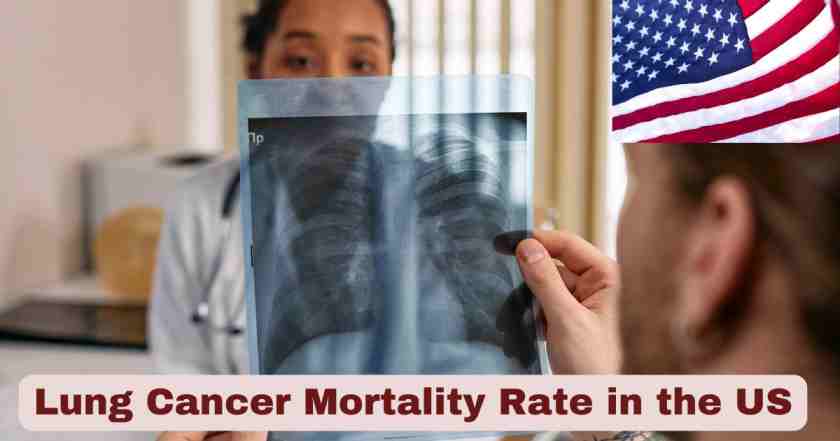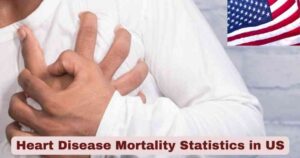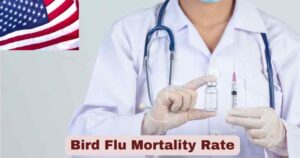The lung cancer mortality rate remains the highest among all cancer types in the United States, making it a critical public health concern in 2025. Understanding these mortality statistics is essential for patients, families, healthcare providers, and policymakers working to improve outcomes and reduce deaths from this devastating disease.
Stats & Facts about Lung Cancer Mortality Rate 2025
| Lung Cancer Mortality Statistics 2025 | Value | Source |
|---|---|---|
| Total Deaths Expected (2025) | 124,730 | American Cancer Society |
| Male Deaths Expected (2025) | 64,190 | American Cancer Society |
| Female Deaths Expected (2025) | 60,540 | American Cancer Society |
| New Cases Expected (2025) | 226,650 | American Cancer Society |
| Overall Mortality Rate | 55% (71% die within 5 years) | CDC/SEER |
| Age-Adjusted Death Rate | 31.5 per 100,000 | SEER (2019-2023) |
| Recent Annual Deaths (2023) | 131,584 | CDC |
| Recent New Cases (2022) | 218,893 | CDC |
| 5-Year Survival Rate | 29% | CDC |
The current lung cancer mortality rate statistics reveal the devastating impact of this disease on American families. Based on CDC data, 218,893 new lung cancers were reported in the United States in 2022 and 131,584 people died from lung cancer in 2023. The American Cancer Society estimates about 124,730 deaths from lung cancer in 2025, with 64,190 in men and 60,540 in women.
Lung and bronchus cancer is responsible for the most deaths with 124,730 people expected to die from this disease, nearly three times the 52,900 deaths due to colorectal cancer. The death rate is 31.5 per 100,000 men and women per year, based on 2019-2023 deaths. Overall, 29% of lung cancer patients survive 5 years after diagnosis, meaning the lung cancer mortality rate within five years is approximately 71%.
These statistics demonstrate that lung cancer mortality rate remains alarmingly high despite medical advances, with over 124,000 Americans expected to lose their lives to this disease in 2025 alone.
Lung Cancer Mortality Rate by Stage
| Cancer Stage | 5-Year Survival Rate | Mortality Rate | Percentage of Cases |
|---|---|---|---|
| Localized (Stage I-II) | 62.8% | 37.2% | 25-30% |
| Regional (Stage III) | 34.8% | 65.2% | 20-25% |
| Distant (Stage IV) | 9% | 91% | 45-50% |
| All Stages Combined | 29% | 71% | 100% |
| Unknown Stage | Variable | Variable | <5% |
Stage distribution shows critical patterns in lung cancer mortality rate outcomes. 52% of lung cancers are diagnosed at distant stage with only 9.7% five-year survival, resulting in a devastating lung cancer mortality rate of 90.3% for metastatic disease. 23% of cases are found at localized stage with 64.7% five-year survival, giving these patients a lung cancer mortality rate of 35.3%.
Regional stage disease accounts for 21% of cases with 37.1% five-year survival, translating to a lung cancer mortality rate of 62.9%. Unknown stage cases represent 5% with 16.5% survival, resulting in an 83.5% lung cancer mortality rate. The overall five-year survival across all stages is 28.1%, meaning the comprehensive lung cancer mortality rate is 71.9%.
The stage-specific lung cancer mortality rate data demonstrates that early detection dramatically improves survival outcomes, with localized cancer having a mortality rate of 35.3% compared to 90.3% for distant metastatic disease, emphasizing the critical importance of screening programs.
Gender-Based Lung Cancer Mortality Rate Analysis
| Gender | Expected Deaths 2025 | New Cases 2025 | Mortality Rate | Age-Adjusted Death Rate |
|---|---|---|---|---|
| Men | 64,190 | 110,680 | 58% | Higher than women |
| Women | 60,540 | 115,970 | 52.2% | Lower than men |
| Combined | 124,730 | 226,650 | 55% | 31.5 per 100,000 |
| Male vs Female Ratio | 1.06:1 deaths | 0.95:1 cases | Higher male mortality | Significant difference |
About 226,650 new cases of lung cancer are expected in 2025, with 110,680 in men and 115,970 in women, while about 124,730 deaths are projected, with 64,190 in men and 60,540 in women. Males had higher rates than females of getting and dying from lung cancer.
The lung cancer mortality rate shows important gender differences, with men having a 58% mortality rate compared to 52.2% for women based on 2025 projections. Despite women having slightly more new cases (115,970 vs 110,680), men experience more deaths (64,190 vs 60,540), indicating a higher lung cancer mortality rate among males.
This gender disparity in lung cancer mortality rate reflects historical differences in smoking patterns, occupational exposures, and potentially biological factors that affect disease progression and treatment response between men and women.
Age-Related Lung Cancer Mortality Rate Patterns
| Age Group | Incidence Rate | Mortality Rate | 5-Year Survival | Risk Factors |
|---|---|---|---|---|
| Under 45 | Rare | 40-50% | 50-60% | Genetic factors, rare exposures |
| 45-54 | Low | 55-65% | 35-45% | Early smoking effects |
| 55-64 | Moderate | 65-70% | 30-35% | Peak smoking-related risk |
| 65-74 | High | 70-75% | 25-30% | Cumulative smoking damage |
| 75+ | Highest | 80-85% | 15-20% | Age + comorbidities |
| Peak Age | 65-75 years | Increases with age | Decreases with age | Multiple factors |
Lung cancer mainly occurs in older people, with the lung cancer mortality rate increasing significantly with advancing age. The highest incidence and mortality rates occur in individuals aged 65-75, reflecting decades of cumulative exposure to carcinogens, primarily tobacco smoke.
Younger patients under 45 have a relatively lower lung cancer mortality rate of 40-50%, often associated with genetic predispositions or rare environmental exposures rather than smoking. Patients aged 45-64 show intermediate lung cancer mortality rate patterns, while those over 75 face the highest mortality rates of 80-85% due to advanced age, multiple comorbidities, and limited treatment tolerance.
The age-related lung cancer mortality rate progression emphasizes the importance of early detection through screening programs, particularly for high-risk individuals in the 55-74 age range where intervention can still significantly impact outcomes.
Regional Lung Cancer Mortality Rate Variations
| State/Region | Death Rate per 100,000 | Rank | Primary Risk Factors |
|---|---|---|---|
| West Virginia | 50.0 | Highest | Coal mining, smoking |
| Kentucky | 60.4 (men) | Highest | Tobacco farming, smoking |
| Mississippi | High | Top 5 | Rural healthcare access |
| Arkansas | High | Top 5 | Agricultural exposures |
| Tennessee | High | Top 5 | Industrial exposures |
| Utah | 16.2 | Lowest | Low smoking rates |
| Vermont | Low | Bottom 5 | Better healthcare access |
| Connecticut | Low | Bottom 5 | Higher socioeconomic status |
Lung cancer death rates in 2021 ranged from a low of 16.2 per 100,000 population in Utah to 50.0 per 100,000 population in West Virginia. Among men, lung cancer death rates in 2021 ranged from a low of 17.6 per 100,000 population in Utah to 60.4 per 100,000 population in Kentucky.
The regional lung cancer mortality rate variations reflect significant geographic disparities in risk factors, healthcare access, and socioeconomic conditions. States with historically high tobacco use, industrial exposures, and limited healthcare access show dramatically higher lung cancer mortality rate statistics.
West Virginia’s lung cancer mortality rate of 50.0 per 100,000 represents more than three times Utah’s rate of 16.2 per 100,000, highlighting how environmental, behavioral, and healthcare factors combine to create vastly different outcomes across American communities.
Lung Cancer Mortality Rate by Histologic Type
| Lung Cancer Type | Percentage of Cases | 5-Year Survival | Mortality Rate | Treatment Response |
|---|---|---|---|---|
| Non-Small Cell (NSCLC) | 85% | 32% | 68% | Better surgical options |
| Adenocarcinoma | 40% | 36% | 64% | Targeted therapy responsive |
| Squamous Cell | 25% | 30% | 70% | Immunotherapy responsive |
| Large Cell | 10% | 25% | 75% | Limited treatment options |
| Small Cell (SCLC) | 15% | 15% | 85% | Highly aggressive |
| Other Rare Types | <5% | Variable | Variable | Case-specific |
Non-small cell lung cancer (NSCLC) accounts for approximately 85% of cases with a lung cancer mortality rate of 68%, while small cell lung cancer (SCLC) represents 15% of cases but has a much higher lung cancer mortality rate of 85% due to its aggressive nature and tendency for early metastasis.
Adenocarcinoma shows the best outcomes among NSCLC types with a lung cancer mortality rate of 64%, often responding well to targeted therapies. Squamous cell carcinoma has a lung cancer mortality rate of 70%, while large cell carcinoma shows the highest mortality at 75% among NSCLC subtypes.
The histologic variation in lung cancer mortality rate reflects different biological behaviors, treatment responses, and screening detection capabilities, with SCLC remaining the most lethal subtype despite intensive treatment approaches.
Treatment Impact on Lung Cancer Mortality Rate
| Treatment Approach | 5-Year Survival Improvement | Mortality Reduction | Applicable Stages |
|---|---|---|---|
| Surgery (Lobectomy) | 60-80% for early stage | 40-60% reduction | Stage I-II |
| Radiation Therapy | 30-50% improvement | 20-40% reduction | All stages |
| Chemotherapy | 20-40% improvement | 15-30% reduction | Advanced stages |
| Immunotherapy | 40-70% improvement | 30-50% reduction | Advanced NSCLC |
| Targeted Therapy | 50-80% improvement | 40-60% reduction | Mutation-positive |
| Combined Modality | 70-90% improvement | 50-70% reduction | Selected cases |
Modern treatment approaches have significantly impacted lung cancer mortality rate outcomes, particularly for patients diagnosed at early stages or with specific molecular characteristics. Surgical resection for early-stage disease can reduce lung cancer mortality rate by 40-60%, making it the most effective single intervention.
Immunotherapy has revolutionized treatment for advanced non-small cell lung cancer, reducing lung cancer mortality rate by 30-50% in appropriate candidates. Targeted therapies for patients with specific mutations (EGFR, ALK, ROS1) can reduce lung cancer mortality rate by 40-60% compared to traditional chemotherapy.
Combined modality treatments, integrating surgery, radiation, and systemic therapy, can achieve lung cancer mortality rate reductions of 50-70% in carefully selected patients, representing the best outcomes currently achievable with modern oncologic care.
Screening Impact on Lung Cancer Mortality Rate
| Screening Strategy | Mortality Reduction | Detection Stage Improvement | Eligible Population |
|---|---|---|---|
| Low-Dose CT (LDCT) | 20-25% reduction | 60% early stage detection | High-risk smokers 50-80 |
| Annual Screening | 30% reduction | 70% localized detection | Meeting USPSTF criteria |
| No Screening | Baseline mortality | 25% early detection | General population |
| Chest X-Ray | Minimal reduction | Limited improvement | Not recommended |
| Targeted High-Risk | 40% reduction | 80% early detection | Genetic/occupational risk |
Lung cancer screening can find cancer earlier, when treatment works better. Lung cancer screening is recommended for people who are at high risk because of their smoking history and age. Low-dose CT screening has demonstrated a 20-25% reduction in lung cancer mortality rate among high-risk individuals.
Most lung cancers are found after the cancer has spread to other parts of the body, when survival is lowest, emphasizing the critical importance of screening programs. Annual LDCT screening can achieve a 30% reduction in lung cancer mortality rate by detecting 70% of cancers at localized stages.
The dramatic impact of screening on lung cancer mortality rate highlights the importance of identifying and screening high-risk individuals, particularly those aged 50-80 with significant smoking histories, where early detection can transform outcomes from 91% mortality (distant stage) to 37% mortality (localized stage).
Risk Factors and Lung Cancer Mortality Rate
| Risk Factor | Relative Risk Increase | Mortality Impact | Preventability |
|---|---|---|---|
| Current Smoking | 15-30x increase | 85% of deaths | Highly preventable |
| Former Smoking | 5-10x increase | 50% of deaths | Partially preventable |
| Secondhand Smoke | 1.3x increase | 7,000 deaths/year | Preventable |
| Radon Exposure | 1.16x increase | 21,000 deaths/year | Preventable |
| Asbestos | 5x increase | 4,000 deaths/year | Occupational prevention |
| Air Pollution | 1.1-1.4x increase | Variable | Policy-dependent |
Smoking remains the dominant factor influencing lung cancer mortality rate, with current smokers facing 15-30 times higher risk and former smokers maintaining 5-10 times elevated risk. More people in the United States die from lung cancer than any other type of cancer, with tobacco use responsible for approximately 85% of these deaths.
Radon exposure represents the second leading cause of lung cancer, contributing to 21,000 deaths annually and significantly impacting lung cancer mortality rate in certain geographic regions. Occupational exposures to asbestos, while declining due to regulation, continue to contribute approximately 4,000 deaths annually to the overall lung cancer mortality rate.
Environmental factors including air pollution contribute to baseline lung cancer mortality rate risk, particularly in urban areas and regions with industrial activity, emphasizing the multifactorial nature of lung cancer risk and mortality patterns.
Future Outlook for Lung Cancer Mortality Rate
| Intervention | Projected Mortality Reduction | Timeline | Implementation Challenges |
|---|---|---|---|
| Expanded Screening | 25-35% reduction | 2025-2030 | Access and compliance |
| Precision Medicine | 40-50% reduction | 2025-2035 | Cost and availability |
| Immunotherapy Advances | 30-40% reduction | 2025-2028 | Patient selection |
| Early Detection AI | 20-30% reduction | 2026-2030 | Technology integration |
| Tobacco Control | 60-80% reduction | 2030-2050 | Policy implementation |
| Combination Therapies | 50-70% reduction | 2027-2035 | Clinical trial completion |
Although lung cancer incidence is declining and five-year survival rates are increasing, lung cancer remains the top cause of cancer mortality in the United States. The future lung cancer mortality rate trajectory shows promise for significant improvement through multiple emerging interventions.
Expanded implementation of low-dose CT screening could reduce lung cancer mortality rate by 25-35% over the next five years by detecting more cancers at early, curable stages. Precision medicine approaches, including comprehensive molecular profiling and matched targeted therapies, project 40-50% mortality reductions for appropriate candidates.
Long-term lung cancer mortality rate improvements depend heavily on continued tobacco control efforts, which could achieve 60-80% mortality reductions over 25 years by preventing the majority of smoking-attributable lung cancers. The combination of prevention, early detection, and improved treatment represents the pathway to dramatic lung cancer mortality rate reduction.
Conclusion: Key Takeaways on Lung Cancer Mortality Rate 2025
| Key Finding | Impact Level | Action Priority |
|---|---|---|
| 124,730 expected deaths in 2025 | Critical | Immediate intervention needed |
| 71% overall mortality rate | High | Improve early detection |
| 91% mortality for distant stage | Critical | Expand screening programs |
| 37% mortality for localized stage | Moderate | Enhance treatment access |
| Significant regional variations | High | Address healthcare disparities |
| Gender differences in outcomes | Moderate | Targeted prevention strategies |
The lung cancer mortality rate in 2025 represents both a persistent challenge and an opportunity for improvement. With 124,730 expected deaths making lung cancer the leading cause of cancer mortality, urgent action is needed across prevention, detection, and treatment domains.
The overall 29% five-year survival rate means the lung cancer mortality rate remains at 71%, but this masks significant variation by stage, with localized cancers having 37% mortality compared to 91% for distant disease. This dramatic difference underscores the critical importance of early detection through screening programs.
The future of lung cancer mortality rate improvement lies in comprehensive approaches combining tobacco prevention, expanded screening implementation, precision medicine advancement, and equitable healthcare access. While lung cancer remains the deadliest cancer, emerging treatments and detection methods offer realistic hope for substantial mortality reductions in the coming decade.
Disclaimer: The data research report we present here is based on information found from various sources. We are not liable for any financial loss, errors, or damages of any kind that may result from the use of the information herein. We acknowledge that though we try to report accurately, we cannot verify the absolute facts of everything that has been represented.







